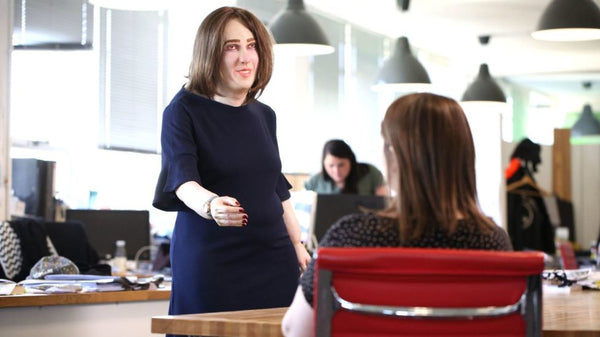
Wellbeing
The truth about desks and chairs
In the not so distant past, well-being at work was primarily seen as a health and safety issue. Offices and office furniture were seen as places where you went to work and then once in the building, where you got work done! Sure, there might be occupational health who popped round to check that you were sitting correctly and had your computer mouse in the right position but that was about it.
All of this seems a bit 1990s now, and for good reason. Firms have moved beyond the idea of mere bricks and mortar and fixtures and fittings when it comes to offices and instead embraced the idea that places of work should help to improve employees’ physical and psychological well-being. It’s a fundamental shift in mindset and really, it’s progress as we learn more and more about what we as humans need to thrive.
Designing workplaces that help staff focus and be more productive…
Ergonomics
As much as we know what we should be doing, not everyone does the right thing and that leads to injury, time off work and for the employer a potential drop in productivity. This article highlights a study that’s found that about 600,000 workplace injuries can be attributed to outdated or unsafe furniture! That’s a lot of sick days!
Here are some common issues with office workstations that Personnel Today identified.
• improperly adjusted furniture and equipment;
• poorly organised or inappropriate workstation layout;
• prolonged awkward and/or twisted postures;
• excessive stretches and reaches;
• static postures; and
• stress and muscular tension.
Ergonomic furniture is designed to support each individual’s body – to be comfortable and efficient. For example, ergonomic task chairs are designed to support the spine, neck and head to try to minimise work place injury. Sit-stand desks are ergonomic in that they allow workers to choose between working sitting down or standing up and to switch between the two is pretty simple. Team members with back conditions may benefit from these as they’re not in one position all day.
Ergonomic simply means “relating to or designed for efficiency and comfort in the working environment” and we are seeing more and more companies apply this approach not only to furniture but to the office space as a whole. Increasingly, office designs are focused on improving the well-being of people in holistic ways. This can range from more tangible changes such as the provision of daylight and fresh air, to the subtle, less tangible improvements such as signs of a working culture that encourages movement, interaction and taking proper breaks.
This issue has become so intertwined with workplace design, that it is now considered when designing green buildings. According to a World Green Building Council study, there is now “overwhelming evidence” for the ways in which office design significantly impacts the health, happiness, well-being and productivity of people.
What might office workers look like in 20 years’ time?
Sky News have published an article, which was commissioned by office equipment firm Fellowes, where they produced a pretty horrifying life-sized model that shows what an office worker might look like in 20 years. They’ve even named it ‘Emma’ pictured below - with a permanently hunched back, varicose veins, red eyes and a protruding stomach. Read the full article here.
